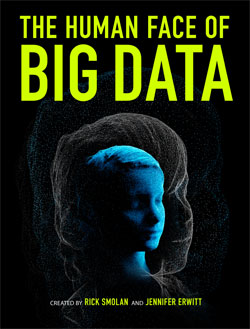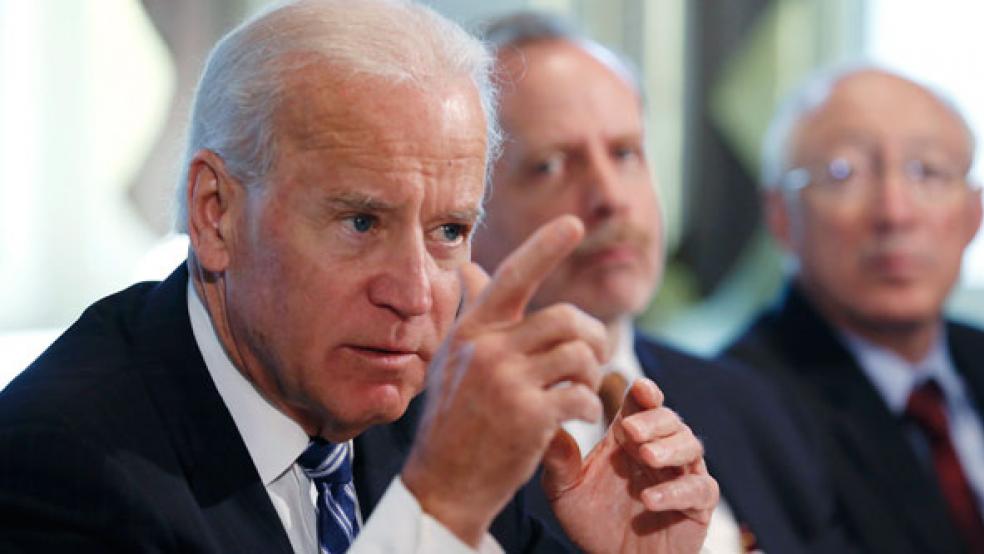In the wake of the tragic events in Newtown, Connecticut, President Obama has made reducing gun violence in this country a priority, while the firepower and big bucks of the National Rifle Association have suggested putting armed guards in every school across the U.S. But what has gotten little attention lately in the heated debates on guns and gun rights currently is the critical role the knowledge revolution can play in the issue.
On Friday, Vice President Joe Biden, leader of a new task force on gun violence, said his group is examining new technology that would prevent people from firing guns that they did not purchase themselves.
Biden said his group “will be meeting with technology experts because, to overstate the case ... a lot could change if, for example, every gun purchased could only be fired by the person who purchased it. That technology exists, but it’s extremely expensive.”
The vice president, due to send a report to the White House on Tuesday, said that if the devices “were available with every weapon sold, there’s significant evidence that it may very well curtail what happened up in Connecticut... Had the young man [Adam Lanza] not had access to his mother’s arsenal, he may or may not have [done] what he did,” Biden said.
He was referring to what’s known as smart gun technology, which would enable the weapons, through embedded sensors in the grip, to recognize the fingerprints of a gun owner. There are opponents and skeptics, of course. New Jersey famously tried and failed in the past decade to enact a smart gun law, and the Violence Policy Center, a group working to stop gun-related deaths and injuries, has said the feasibility of such technology is still speculative.
But what’s not questionable is the other ways the knowledge revolution can help solve the problem of gun violence by responding much more rapidly to events as they occur, potentially saving lives and organizing critical knowledge that can be used to reduce and prevent gun crime in the future.
Case in point: A firm called ShotSpotter, a leader in the gunshot detection field, is actively using acoustic sensors placed at intervals throughout a given neighborhood to record the sound of gunfire. Then, using computers, it can triangulate the sound to pinpoint the sources of those blasts on a map.
The privately held company, recently profiled in the new book The Human Face of Big Data by Rick Smolan and Jennifer Erwitt, can spare police the long, trying and often expensive searches for perpetrators and victims. Interestingly, the technology is also showing that in dangerous neighborhoods across the U.S., only a tiny fraction of all gunshots fired – perhaps 10 percent – are even reported at all.
RELATED: How You’re Shaping the Future Through Big Data
Imagine, for example, that this technology resulted in massive amounts of data – known as Big Data – and was used to identify terrorist cells in the U.S. or elsewhere where illegal “training camps” prepare terrorists for their nefarious deeds. If law enforcement identified unusual activity in multiple areas from the data, an alert could go out, potentially thwarting a disaster.
“Today, more than 70 cities around the country are using ShotSpotter and its security technologies to accurately pinpoint the locations of shootings within their jurisdictions,” say Smolan and Erwitt. “The technology has become one of the most powerful tools available to crime fighters – and represents a classic example of the power of Big Data.”
Marc Goodman, a global security expert, says that when it comes to combating violence in our society, “the Big Data revolution holds the promise of empowering all of us with knowledge, products and services that will make our lives measurably better.”
At ShotSpotter’s offices in Mountain View, California, the staff – using sophisticated acoustic sensors, high-speed telecommunications and powerful computers – can pinpoint with great accuracy the starting point of a given gunshot. But the abilities go beyond just nailing that gunshot to a spot on a street map: The technology can also deliver the precise outside location, all in a matter of seconds.
RELATED: 19 Unbelievable Facts About Guns in America
The benefits to crime fighters are critical: Instead of police arriving at a crime scene about a half-hour after reports of gunfire, they can be there in under two or three minutes. The near-instant analysis of data means that law enforcement personnel are often able to respond to an event as it is happening – perhaps even in time to catch the criminal or to save the life of a gunshot victim.
ShotSpotter says that for over a decade, public safety agencies have used its data-driven solutions “to provide them with timely and precise event detection and actionable intelligence to aid their proactive anti-crime strategies.”

To protect ourselves from future threats by gun-toting killers and other criminals, Goodman, the security expert, says “we will have to fight this battle on two fronts, both of them driven by technology and the Big Data revolution.” The first line of attack, he says, “will be an arms race between traditional law enforcement and the criminal world,” which he says will mostly take place in high-powered crime command centers in major cities and use powerful new predictive data analytics.
But “the second tool,” says Goodman in an essay in The Human Face of Big Data, “will have to be broader, deeper, and much more scalable than traditional police work. That tool is all of us. I am increasingly convinced that we will be much better off having millions of average citizens approaching the problem of public safety as a group and seeing what we can do, [rather] than merely leaving the problem to a select group of government officials.”
The tools we need, he adds, “are already in our hands: crowdsourcing, citizen journalism and investigation, cloud computing, and global wireless broadband communications. Add to that the emerging analytical tools of Big Data and billions of new sensors about the world spewing data – and all of the pieces will be in place to create a powerful counterbalance to those” who would try to harm us, even in our own backyards.
This is the third in a series of articles about the ability of Big Data to change lives, economies, governments and much more, as captured by Rick Smolan and Jennifer Erwitt in The Human Face of Big Data. Read more about their project here.





